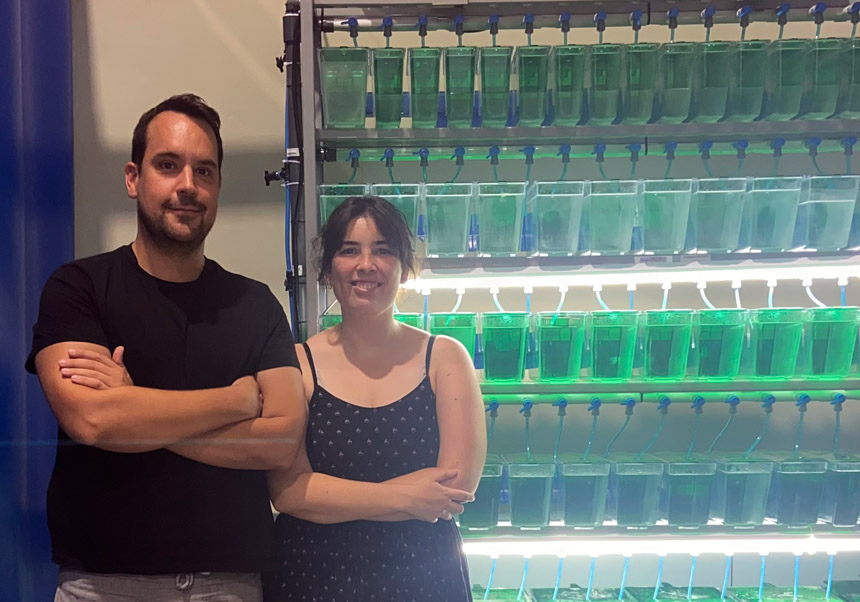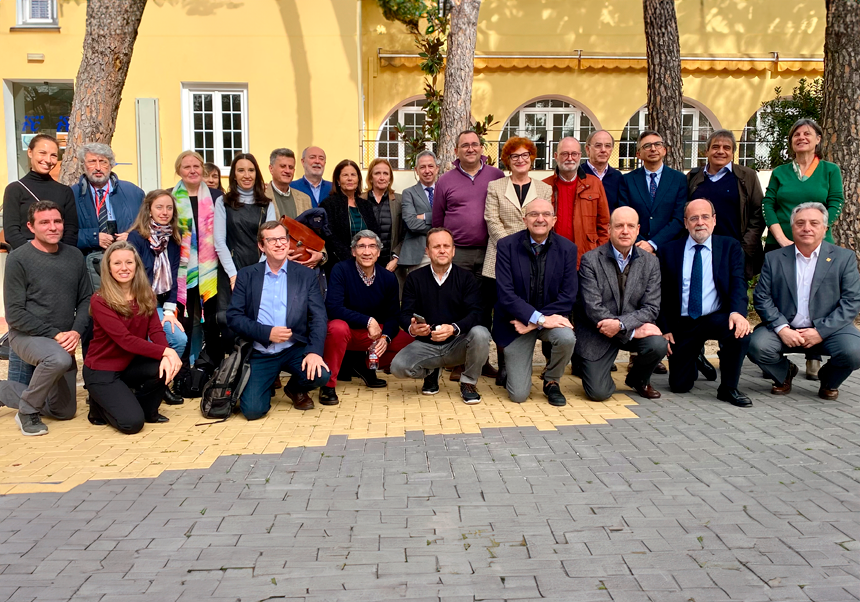Using Artificial Intelligence to anticipate traffic-related high-pollution periods in València
- Marketing and Communication Service
- September 3rd, 2025

A team from the Corpuscular Physics Institute (IFIC, UV-CSIC) and the Information and Communication Technology Institute (ITACA, UPV) has developed an innovating system for predicting and alerting of urban traffic based on deep learning techniques. This method can anticipate high-pollution periods for easier implementation of preventive meassures.
The research team starting point is: reducing emissions from traffic contributes to mitigating climate change and improves the air quality in cities. For example, València traffic represents around 60 % of total greenhouse effect gas emissions (GEI).
To mitigate the situation, researchers have applied a system to learn 30 minutes in advance the traffic volume to be registered in a specific road section, which makes it easier to implement preventive meassures to reduce contamination and protect citizens' health.
'Urban traffic is an important source of harmful atmospheric pollution. Let's not forget that air pollution is the main environmental cause of premature deaths', stated Edgar Lorenzo-Sáez, reseacher at ITACA and one of the project members. The blow quality of the air is also related to diseases like asthma, lung cancer and heart problems that are 'responsible for over 300.000 premature death each year in the European Union'.
A precise, trust-worthy scalable system
The system was trained with data from 1472 traffic sensors around all València and complemented with metheorological variable —wind, rain, atmospheric pressure. The new method classifies each road segment in three alert levels and uses neuronal Long Short-Term Memory (LSTM) networks to achieve real time fine precision, even in rush hours.
The model has demonstrated that traffic data serves as an acurate indicator of nitrogen oxides (NOx) levels, one of the most damaging pollution agents. This is specially useful in environments that lack a dense air-quality sensors network. This could increase the effectivity of Low Emission zones (ZBE) with more localised and adapted meassures for the actual risk of the area, avoiding unnecessary generalised restrictions with larger social impact.
'We detected a direct correlation between traffic flow and NOx level registered, which allows us to generate an alert even without a complete air quality sensors network. It is a key mission for most European cities with limitted resources' points out Javier Urchueguía, another ITACA researcher.
According to full-time professor in Theoretical Physics of Universitat de València, IFIC researcher and co-author fo the study Verónica Sanz 'we have worked hard to make these systems solid and adapted to different scenarios, and that allows its implementation in many other locations. Artificial intelligence can become a great ally for cities to breathe better air. This system developed in València is ready to be exported and help improve the air quality around the world'.
A step towards more sustainable and resilient cities
This project poses an advancement in urban management based on data, integrating artificial intelligence as a tool to address complex environmental challenges. According to the authors, the system can become an essential instrument to design more dynamic, efficient and socially acceptable interventions, specially oriented to protect vulnerable collectives like children, elderly and pacients of respiraory-related illnesses.
Among the future development lines, the creation of a digital twin València to simulate measures prior to their implementation and the incorporation of additional sensors of the Internet of Things (IoT) to further improve the pollution detection.
The study was published in the scientific papel Neural Computing and Applications and has been supported by Generalitat Valenciana and the Ministry of Science, Innovation and Universities.
Reference:
Methodology development for high-resolution monitoring of emissions in urban road traffic systems. Atmospheric. Neural Computing and Applications. Miguel G. Folgado, Verónica Sanz, Johannes Hirn, Edgar Lorenzo-Sáez, Javier Urchueguía. DOI: https://doi.org/10.1007/s00521-025-11316-0
File in: Física , Ciencias Tecnológicas















